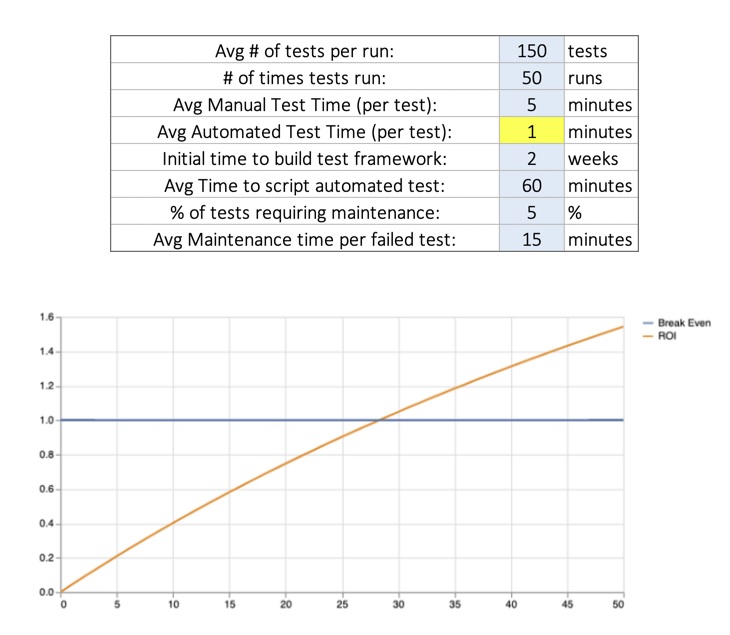Test automation ROI should take into account qualitative factors not just quantitative:
The risk that a human can make a mistake while testing manually. This one is very significant when it comes to testing a complex scenario, such as a financial calculation.
Distractions and the monotony level of testers during manual execution should not be ignored. People simply don’t actively engage in testing that is boring and they zone-out causing them to miss defects that should have been caught. This repetitive work also increases employee levels of unhappiness, which can easily lead to higher levels of turn-over. From a test management perspective, this should be a major factor for automation efforts that are difficult to measure as part of making a business case for investment in automation.
Having a happy team that automates extra tests for the above reasons makes even more sense, than solely because it is financially profitable. Financial arguments help provide a business case to gain support from higher levels of management and are also important, but having an engaged test team that happily builds automation and follows QA processes are much more effective and important factors to a projects success that will ultimately lead to higher end customer value.
What is the ROI of my test automation?
